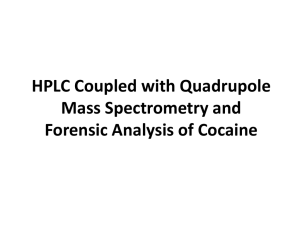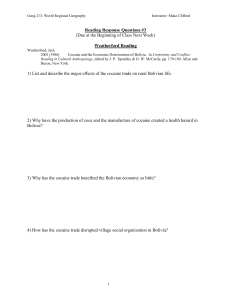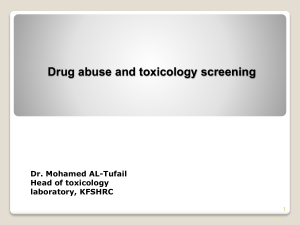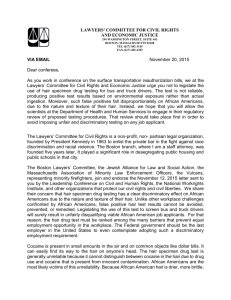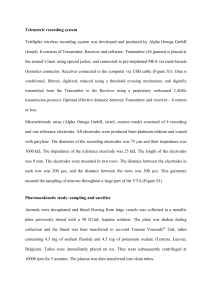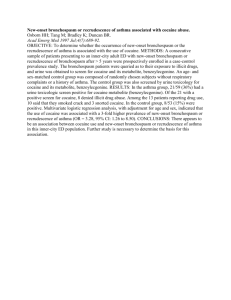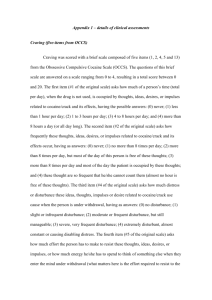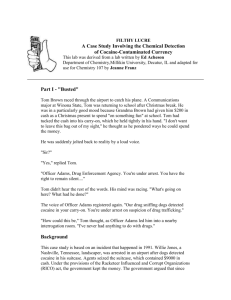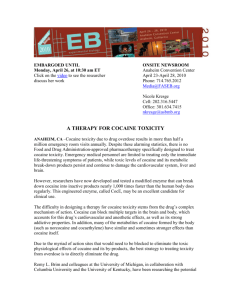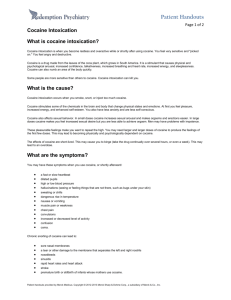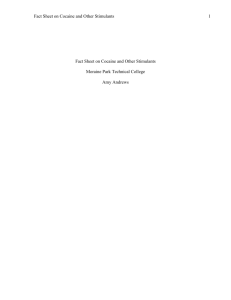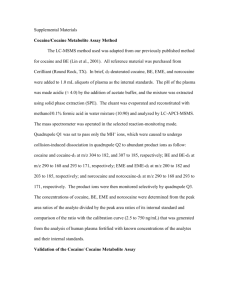Learning Modules - Department of Computer Science, NMSU
advertisement
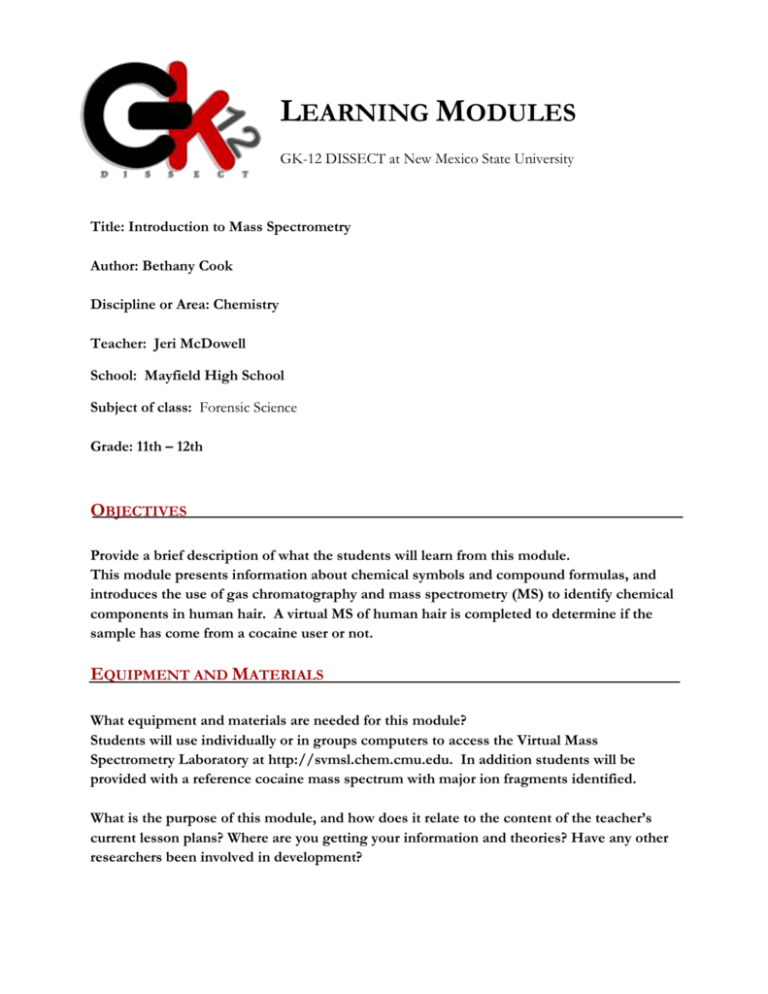
LEARNING MODULES GK-12 DISSECT at New Mexico State University Title: Introduction to Mass Spectrometry Author: Bethany Cook Discipline or Area: Chemistry Teacher: Jeri McDowell School: Mayfield High School Subject of class: Forensic Science Grade: 11th – 12th OBJECTIVES Provide a brief description of what the students will learn from this module. This module presents information about chemical symbols and compound formulas, and introduces the use of gas chromatography and mass spectrometry (MS) to identify chemical components in human hair. A virtual MS of human hair is completed to determine if the sample has come from a cocaine user or not. EQUIPMENT AND MATERIALS What equipment and materials are needed for this module? Students will use individually or in groups computers to access the Virtual Mass Spectrometry Laboratory at http://svmsl.chem.cmu.edu. In addition students will be provided with a reference cocaine mass spectrum with major ion fragments identified. What is the purpose of this module, and how does it relate to the content of the teacher’s current lesson plans? Where are you getting your information and theories? Have any other researchers been involved in development? The purpose of this module is to 1) use atomic symbol and compound formula information, neutrality and ionic nature, 2) introduce analytical methods that produce ion fragment information of complex samples, 3) virtually produce a gas chromatogram and mass spectrum for a human hair sample and 4) determine if MS peaks indicate cocaine presence in hair. This module allows students to review fundamental principles of chemistry while exposing them to current forensic science analytical techniques, reference comparisons, ambiguity in data (some cocaine fragments are present – not all), and group decision making (how much data is needed to decided if this individual is a drug user and not employable?). GC/MS techniques have been around for decades and are common in many forensic laboratories. Reviews of these techniques can be easily found (An Introduction to Mass Spectrometry Applications in Biological Research. Finehout and Lee, 2003) and the online lab was created and is supported by Carnegie Mellon University (svmsl.chem.edu). PROCEDURE Provide detailed instructions on how this module is taught. Students participate in a review/discussion of atomic symbols, compound formulas, and ion structure. Organic compounds are only used to reinforce the prevalence of C, H, O, and N in biological compounds. The major aspects of the mass spec method are discussed after viewing an online video. Students then work online at the Virtual Mass Spectrometry Laboratory to complete Cocaine in Hair case study. The online case study was supplemented with more detailed instructions for using the website and a reference mass spectrum of cocaine with key fragments previously identified for the high school level. Upon completion, student groups reported conclusions and data was compiled and discussed as a class. This activity also provided the opportunity to discuss the “CSI effect” on jury deliberations. NOTES AND OBSERVATIONS What were challenges you encountered in the overall product of the module? Website navigation was difficult for some students. The intent was to encourage exploration in a guided way (additional instructions on the handout) but students still wanted to know if they were completing the online lab correctly. The online nature of the lab allows students to make mistakes and go back to repeat steps but they were still hesitant to complete a step without approval. What was successful? Students enjoyed using the netbooks and working a module online. The real life application and relevance of drug testing with a strand of hair intrigued many of them. The realization that drug testing may not be a simple one reaction chemical test and the results may be subject to interpretation was engaging. How was the students’ reception to the content of the module? The context of the chemistry was well received however the process of fragmentation during mass spec analysis was very difficult to get across – this impeded the complete processing of why we were identifying cocaine fragments in the hair.
